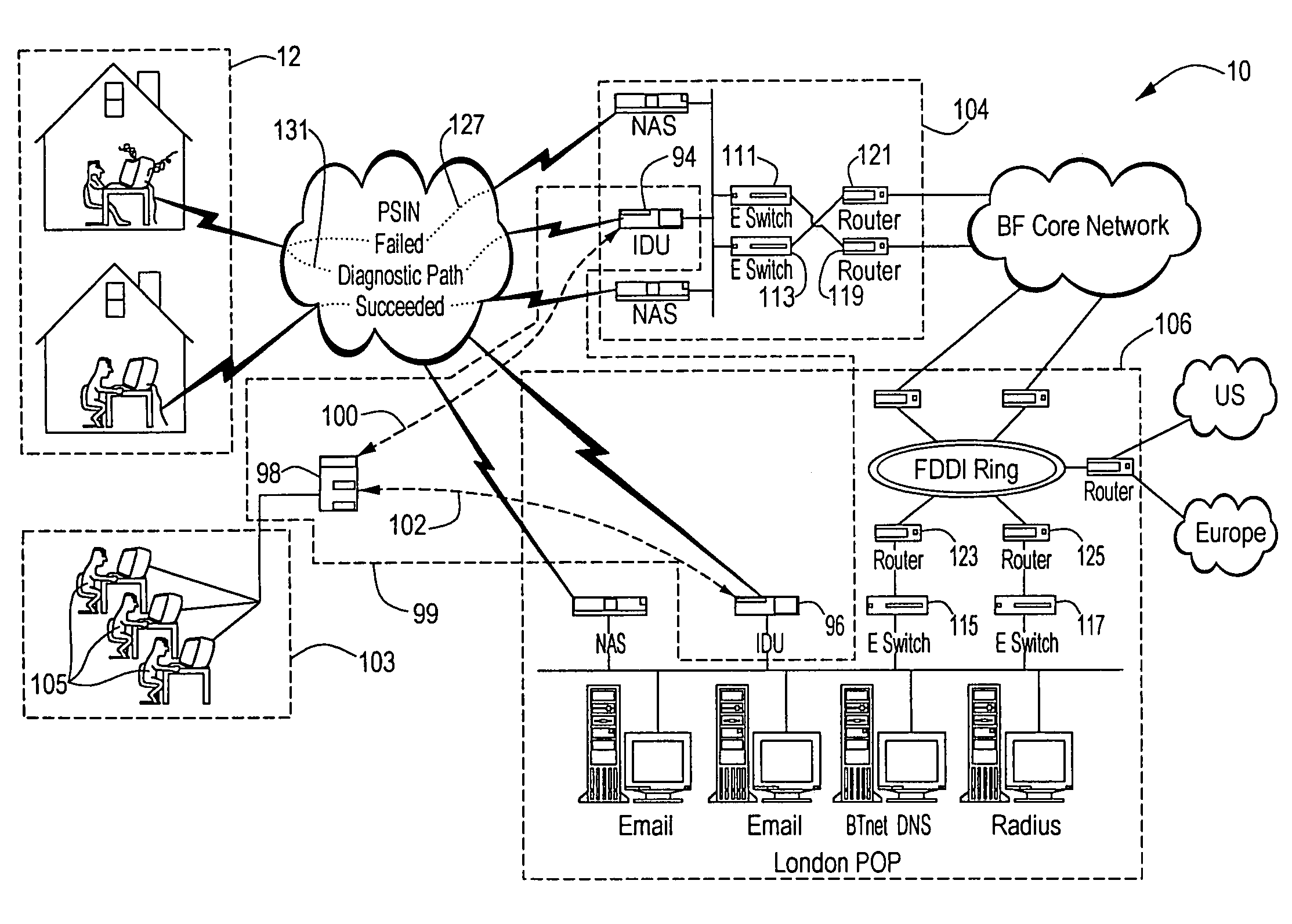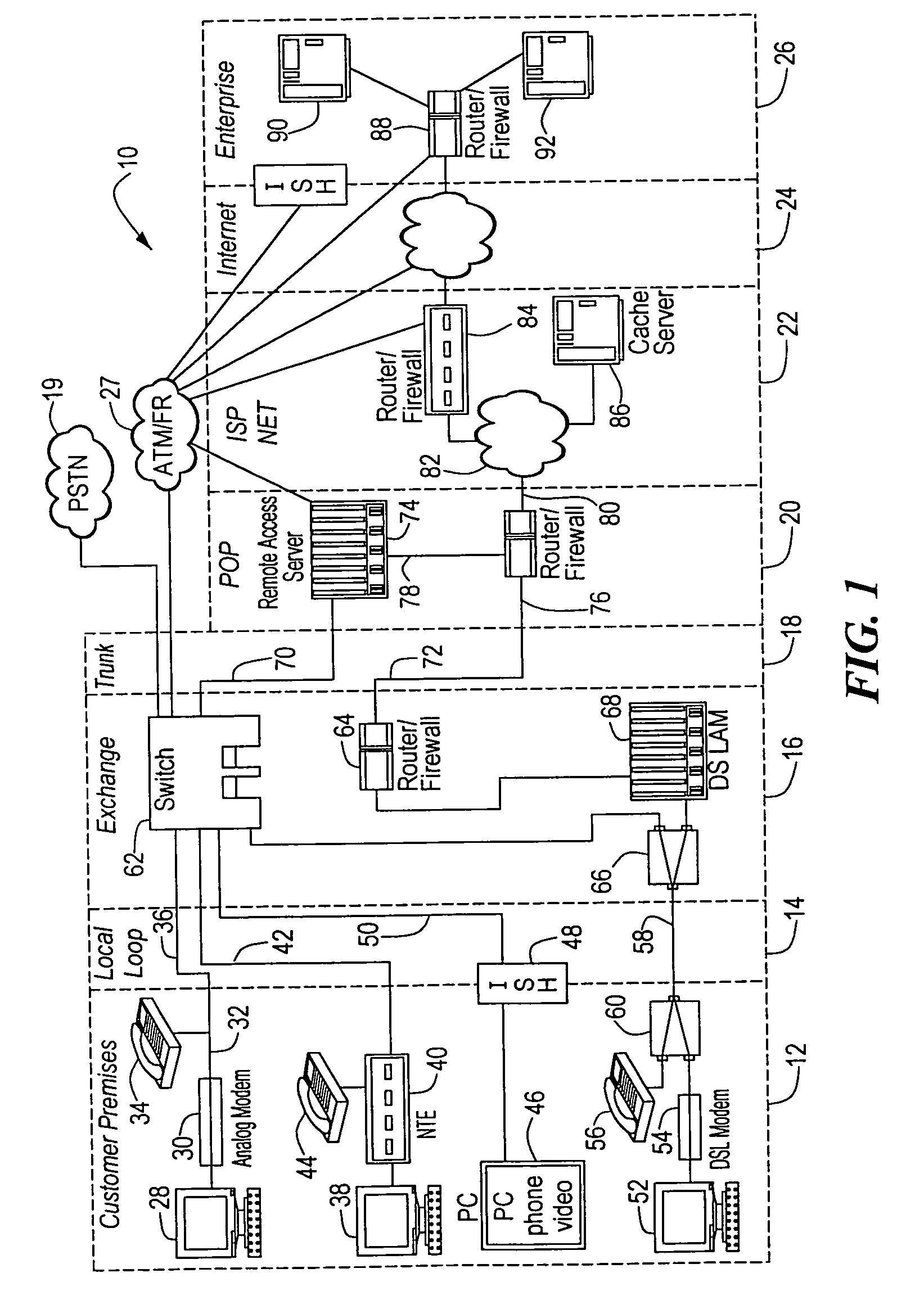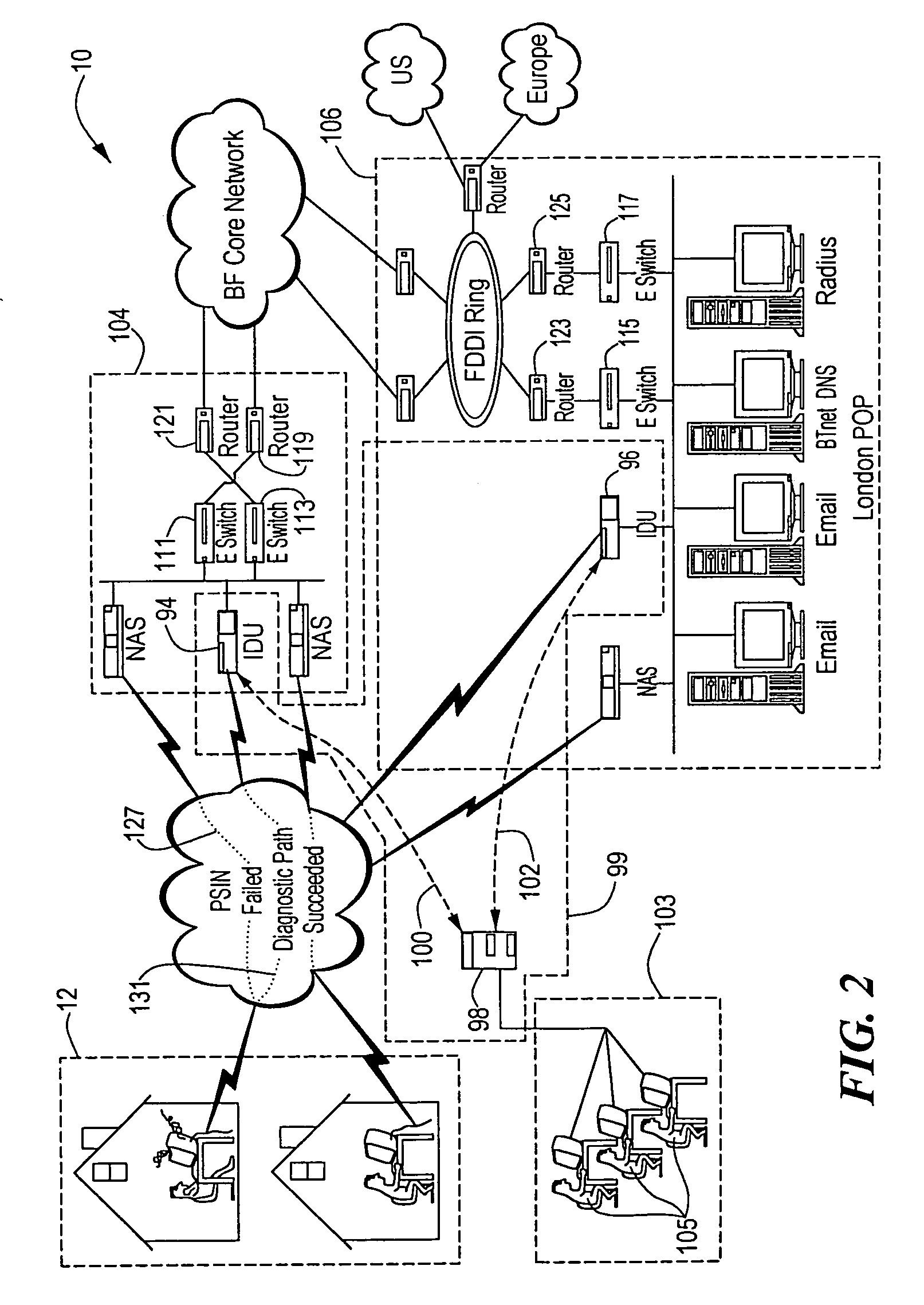Network fault isolation
a fault isolation and network technology, applied in the field of network fault isolation, to achieve the effect of improving fault isolation knowledge, network uptime, reliability, performance, and response/repair tim
- Summary
- Abstract
- Description
- Claims
- Application Information
AI Technical Summary
Benefits of technology
Problems solved by technology
Method used
Image
Examples
Embodiment Construction
[0028]The invention provides techniques for improved fault isolation and fault reduction. Diagnostic devices can be placed throughout a communications network under centralized control. These diagnostic devices can communicate with a user terminal, to determine a problem or symptom experienced by a user, e.g., when trying to transmit or receive data, even if the user terminal cannot communicate using a proper protocol or using a protocol improperly for desired network interactions. Problems or symptoms are what the user reports as evidencing a fault in the network. Faults can also be called causes or root causes. Through communications with the user and other portions of the network, the diagnostic devices, with help from the centralized control if needed, can isolate faults in the network and indicate and record the faults and remedial action and initiate the remedial action. The faults can be monitored and action taken to reduce the frequency at which faults occur. The diagnostic ...
PUM
 Login to View More
Login to View More Abstract
Description
Claims
Application Information
 Login to View More
Login to View More - R&D
- Intellectual Property
- Life Sciences
- Materials
- Tech Scout
- Unparalleled Data Quality
- Higher Quality Content
- 60% Fewer Hallucinations
Browse by: Latest US Patents, China's latest patents, Technical Efficacy Thesaurus, Application Domain, Technology Topic, Popular Technical Reports.
© 2025 PatSnap. All rights reserved.Legal|Privacy policy|Modern Slavery Act Transparency Statement|Sitemap|About US| Contact US: help@patsnap.com



